
王顺芳
- 教授,博士生导师。
- 联系方式:sfwang_66@ynu.edu.cn;1940219519@qq.com
- 地址:信息学院1515室



云南大学信息学院教授、理学博士、计算机科学与技术专业博士生导师。2009年破格聘为云南大学教授、2015年聘为博士生导师。云南省中青年学术和技术带头人、美国Texas A&M 大学访问学者。
中国计算机学会高级会员、中国计算机学会生物信息学专委会执行委员、中国人工智能学会不确定性人工智能专委委员、中国人工智能学会生信与人工生命专委委员、中国生物工程学会计算与生信专委会委员、中国现场统计研究会统计交叉科学研究分会常务理事。
担任Briefings in Bioinformatics、ACM Transactions on Knowledge Discovery from Data、PLOS Computational Biology、BMC Genomics、Journal of Medicinal Chemistry、IEEE/ACM Transactions on Computational Biology and Bioinformatics、Expert Systems With Applications、Biomedical Signal Processing and Control等十多个国际权威期刊审稿人。
承担省部级纵向科研项目20余项,其中先后主持 5 项国家自然科学基金项目。在Bioinformatics、Briefings in Bioinformatics、IEEE Journal of Biomedical and Health Informatics、IEEE/ACM Transactions on Computational Biology and Bioinformatics、BMC Genomics、BMC Bioinformatics、Computers in Biology and Medicine、 Computational Statistics & Data Analysis、Biomedical Signal Processing and Control、 BIBM、ISBRA等国际权威期刊和会议上以第一作者或者通讯作者发表 SCI/EI 收录学术论文 100 余篇,授权发明专利 6 项。
1、 国家自然科学基金项目,高维稀疏蛋白质数据的特征整合和分类预测,(62062067,2021/01-2024/12)
2、 国家自然科学基金项目,临床数据交叉设计下的复杂等效性评价及统计推断,(11661081,2017/01-2020/12)
3、 国家自然科学基金项目:生物特征识别中高维数据的统计降维及算法研究,(11261068,2013/01-2016/12)
4、 国家自然科学基金项目:治疗方案评价中的统计推断和算法研究(10901135,2010/01-2012/12)
5、 国家自然科学基金项目:2×2 表中基于风险差和风险比的统计推断,(10626048,2007/01-2007/12)。
6、 云南省应用基础研究重点项目:蛋白质分类预测中的数据降维算法研究,(2017FA032,2017/06-2020/5)
http://www.rsc.ynu.edu.cn/info/1006/3237.htm
http://www.ise.ynu.edu.cn/annunciations/190
2、招收博士生(三种方式:申请考核制、硕博连读、直博)
3、招生(硕士生、博士生)方向:
(1)机器学习方法研究、智能计算方法研究
(2)基于机器学习和深度学习的生物医学数据分析
基于深度学习的医学图像处理和多模态影像融合分析
基于机器学习的生物多组学数据分析
基于注意力机制的生物序列数据分析
基于图卷积神经网络的蛋白质空间结构预测
基于网络表示学习和拓扑结构的复杂生物系统分析
(3)复杂高维数据降维和分类预测
研究方案举例:通过挖掘常用生物医学数据库:NCBI、GEO、TCGA、Genbank、SWISS-PROT、PDB、KEGG等,获得多组学数据并进行数据分析和推断、机器学习和智能算法创新,得到基因、药物、疾病关联的分析结论并推荐。
4、对研究生的要求:编程和算法、英语读写、数学
(优秀硕士生在二年级或三年级可申请转为本人所带硕博连读生)
5、部分已毕业研究生获奖
(1)云南省优秀硕士学位论文:曹子成(2020)、聂冰(2019)、雷振风(2019)、刘树慧(2018)
(2)雷振风:云南大学学业奖学金一等奖、国家奖学金、第六届研究生东陆英才奖学金、云南大学优秀毕业生
(3)郭磊:云南大学学业奖学金二等奖、国家奖学金
6、研究生主持科研项目:
(1)李兆锋:2020云南大学生科研创新项目(院内资助)“基于卷积神经网络的DNA修饰预测”
(2)马娟:2017云南大学生科研创新项目“三阶段交叉设计临床试验的等效性检验”
(3)阮小利:2016云南大学生科研创新项目(院内资助)“基于核熵复合核函数的低分辨率多结构化人脸特征的提取与表达”
(4)郭磊:2017云南大学生科研创新项目(院内资助)“蛋白质组学数据中不平衡问题的新型机器学习研究”
7、在读研究生
(1)在读博士生:邵昊、赵澈、余丽、郑伟华、张翔
(2)在读硕士生:杨鑫、叶峻华、唐贤俊、董诗琪、张蝶、李兆锋、周楠、何雨、杨子航、赵常、董浩然、王颖韬、封凡、王国凯、罗龙飞、谭卓昆、余子民、李怀虎
8、已毕业研究生:60余人
1、参加2019中国计算机学会生物信息学会议(CBC2019、广州、CCF生物信息学专委会&华南理工大学)
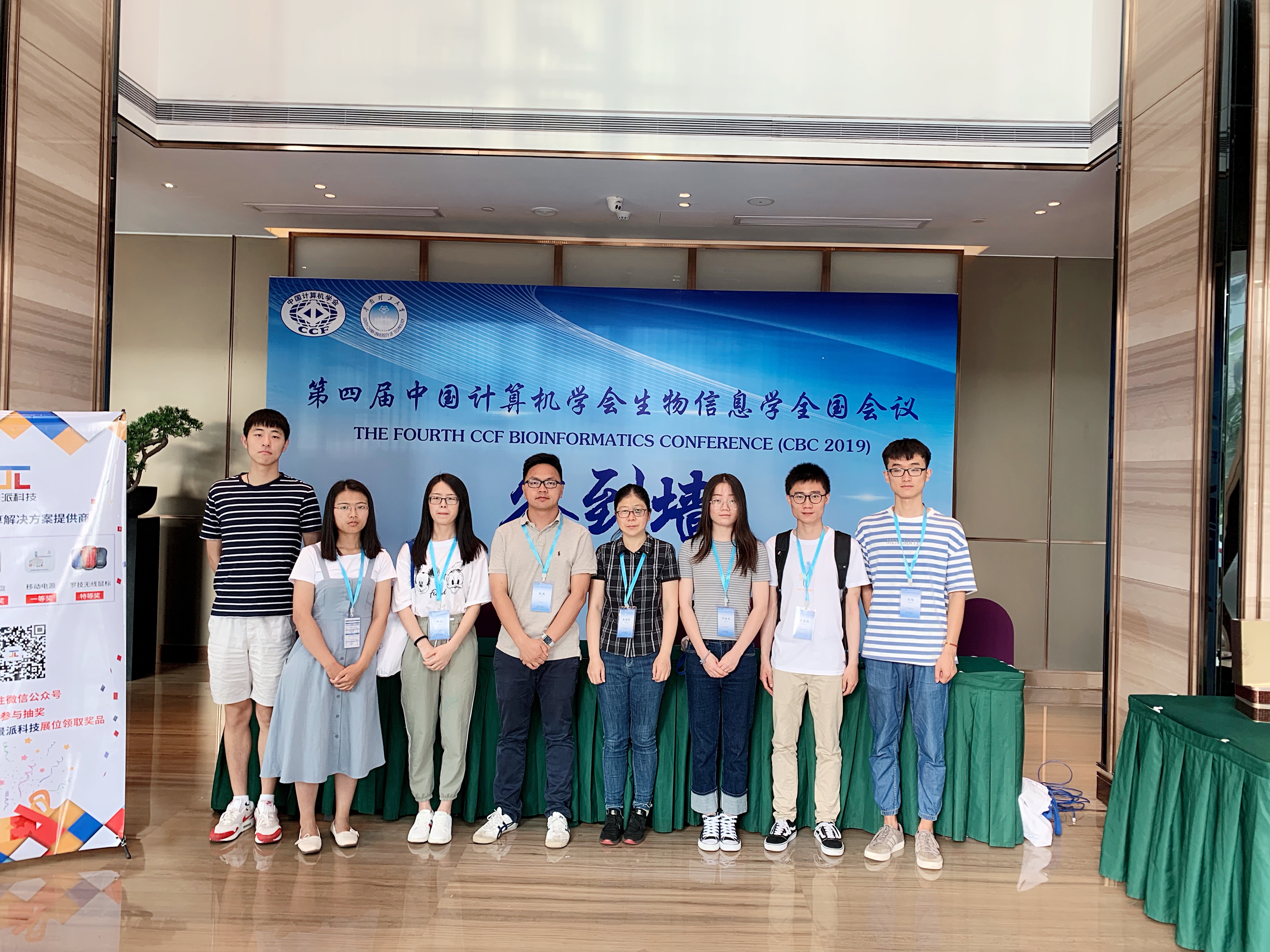
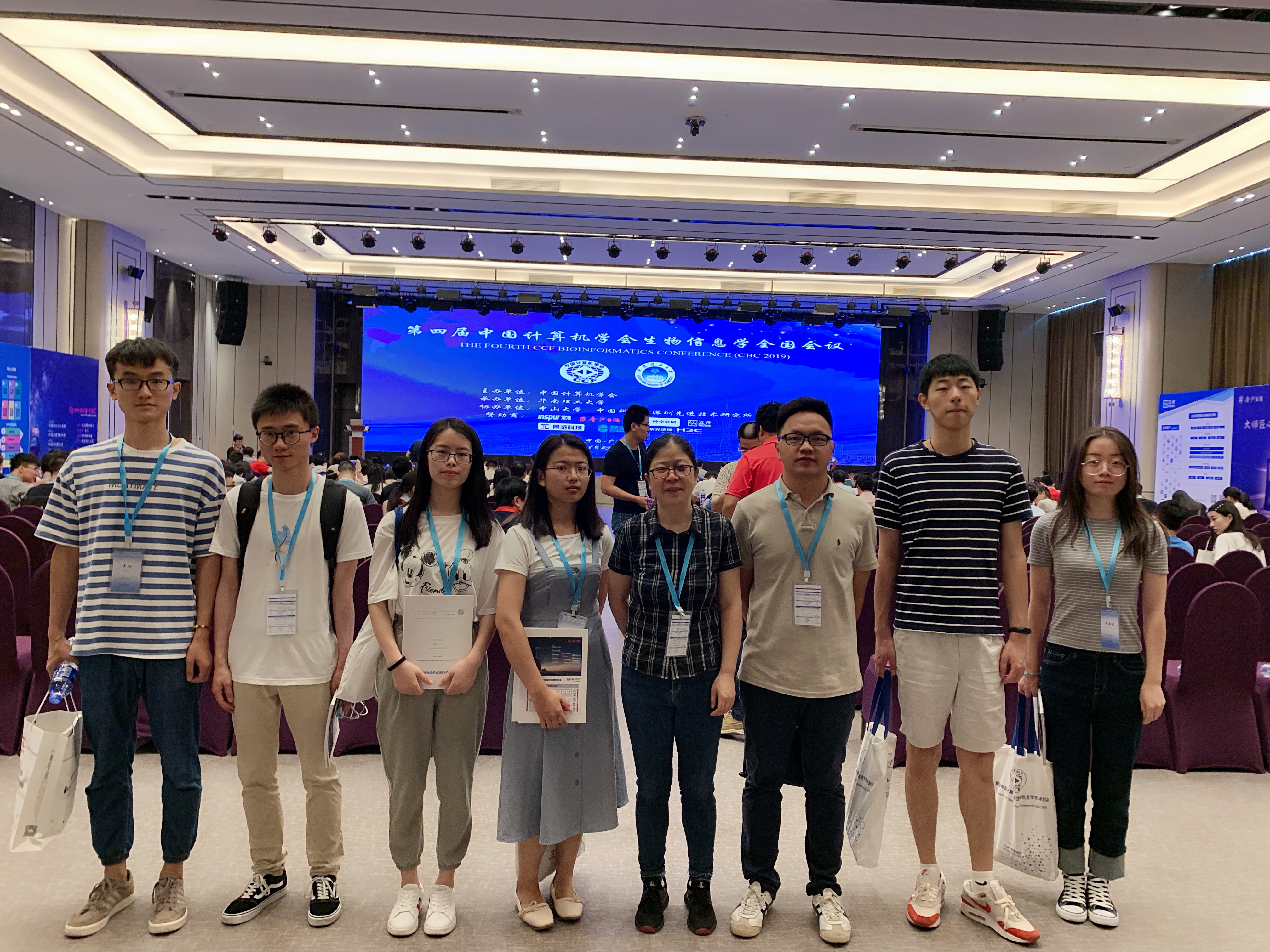
2、参加2018智能计算与生物医学大数据学术会议(上海、同济大学)
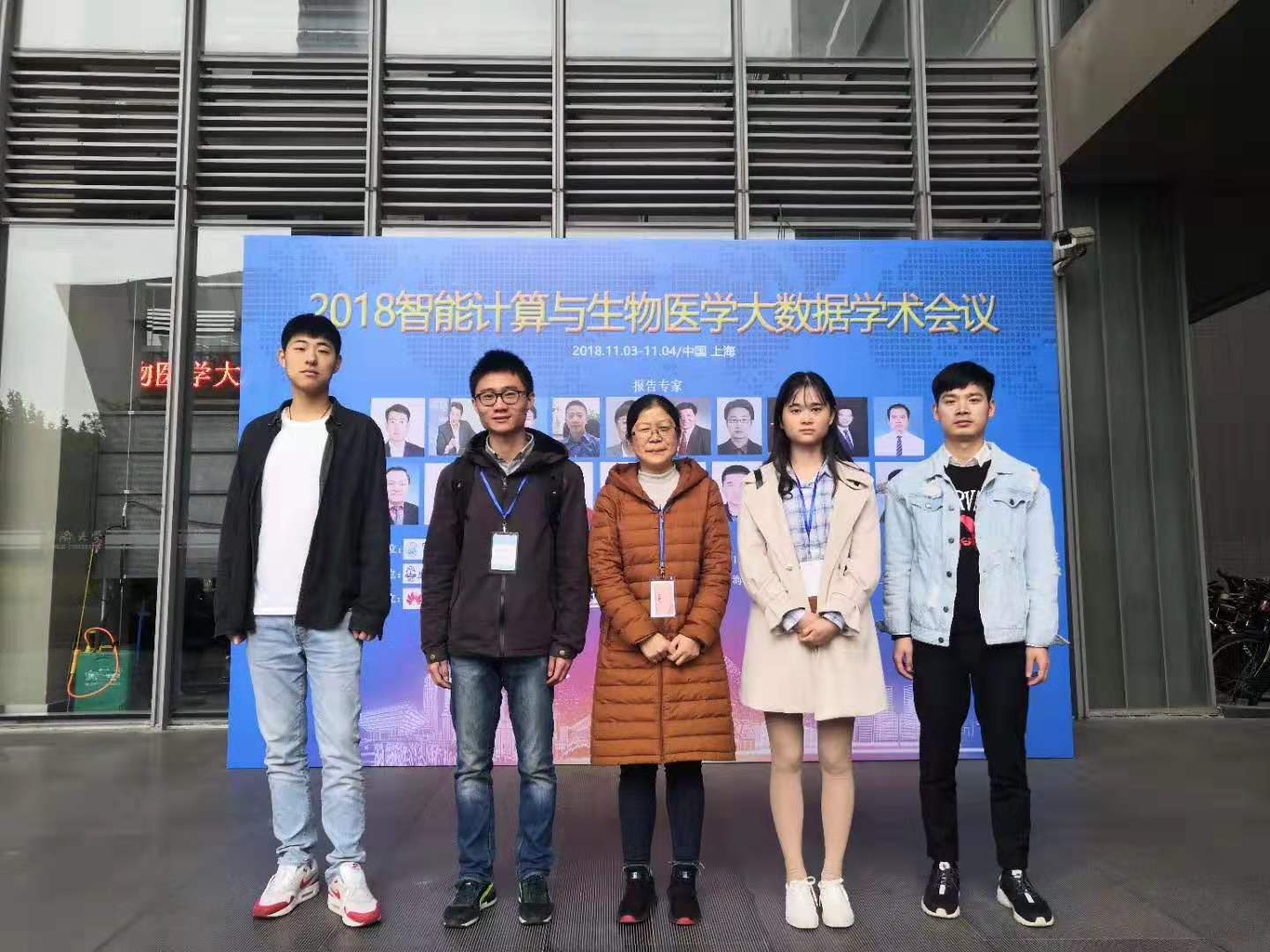
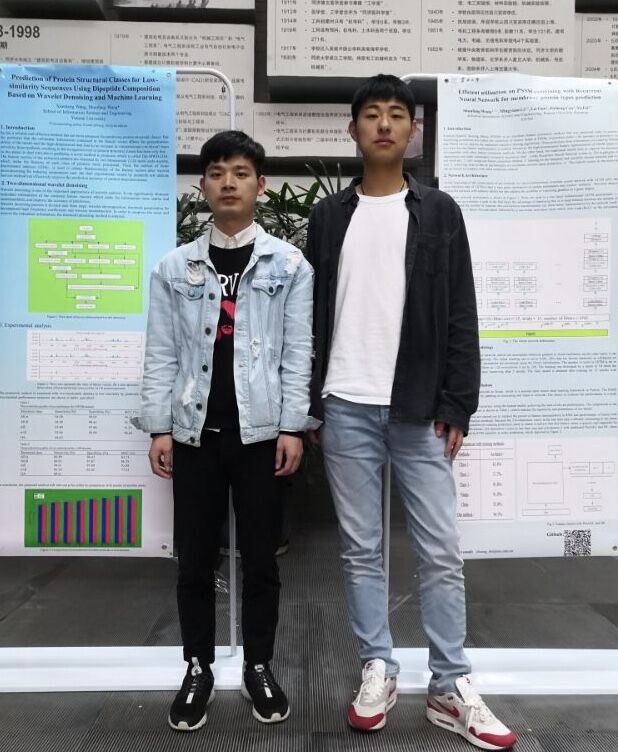
3、参加2018GIW国际学术会议
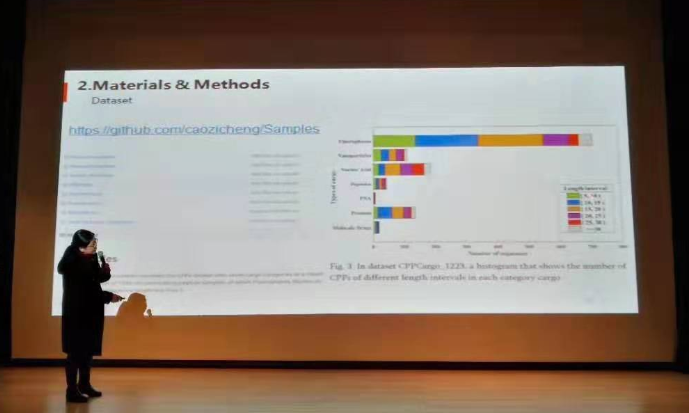
研究生:工程数学
本科:概率论与数理统计、高等数学、线性代数、数值计算、数学实验、工程数学
1. Li Yu , Wenwen Min , Shunfang Wang*. Boundary-aware Gradient Operator Network for Medical Image Segmentation. IEEE Journal of Biomedical and Health Informatics 2024, DOI 10.1109/JBHI.2024.3404273.
2. Yueyi Cai, Shunfang Wang*, Deeply integrating latent consistent representations in high noise multi omics data for cancer subtyping, Briefings In Bioinformatics, 2024,25(03): bbae061.
3. Weihua Zheng, Wenwen Min and Shunfang Wang∗. TsImpute: An accurate two-step imputation method for single-cell RNA-seq data. Bioinformatics, 2023, 39(12):1-8.
4. Yueyi Cai, Shunfang Wang∗ , Junjie Wang , Yu Fei. One-step multi-view clustering guided by weakened view-specific distribution. Expert Systems With Applications 2024 , 251,124021.
5. Che Zhao, Shunfang Wang*. AttCON: With better MSAs and attention mechanism for accurate protein contact map prediction. Computers in Biology and Medicine, 169 (2024) 107822.
6. Zimin Yu, Li Yu, Weihua Zheng, Shunfang Wang*. EIU-Net: Enhanced feature extraction and improved skip connections in U-Net for skin lesion segmentation. Computers in Biology and Medicine, 162(2023), 107081.
7. Chang Zhao, Wenbing Lv, Xiang Zhang, Zimin Yu, Shunfang Wang*. MMS-Net: Multi-level multi-scale feature extraction network for medical image segmentation. Biomedical Signal Processing and Control 86 (2023) 105330.
8. Shunfang Wang*, Zicheng Cao, Mingyuan Li, Yaoting Yue . "G-DipC: An Improved Feature Representation Method for Short Sequences to Predict the Type of Cargo in Cell-Penetrating Peptides," IEEE/ACM Transactions on Computational Biology and Bioinformatics, 2020,17(3):739-747.
9. Yu He , Shunfang Wang *. SE-BLTCNN: A channel attention adapted deep learning model based on PSSM for membrane protein classification. Computational Biology and Chemistry 98 (2022) 107680.
10. Die Zhang, Shunfang Wang*. A protein succinylation sites prediction method based on the hybrid architecture of LSTM network and CNN[J]. Journal of Bioinformatics and Computational Biology, 20(2):2250003,2022.
11. Shunfang Wang*, Lin Deng, Xinnan Xia, Zicheng Cao and Yu Fei. Predicting antifreeze proteins with weighted generalized dipeptide composition and multi‑regression feature selection ensemble. BMC Bioinformatics(2021) 22:340.
12. Huan Yang, Shunfang Wang*.iEnhancer -RD :Identification of enhancers and their strength using RKPK features and deep neural networks. Analytical Biochemistry. 2021,630,114318.
13. Xu Wang, Shunfang Wang*, Haoyi Fu, Xiaoli Ruan and Xianjun Tang. DeepFusion-RBP: Using Deep Learning to Fuse Multiple Features to Identify RNA-binding Protein Sequences. Current Bioinformatics, 2021, 16, 1089-1100.
14. Juan Ma, Shunfang Wang*. Confidence intervals for the common odds ratio based on the inverse sinh transformation, Journal of Biopharmaceutical Statistics,(2021)2021, 31(5):583–602.
15. Shiqi Dong, Shunfang Wang*. Assembled graph neural network using graph transformer with edges for protein model quality assessment. Journal of Molecular Graphics and Modelling, 110 (2021),108053.
16. Junhua Ye, Shunfang Wang*, Xin Yang and Xianjun Tang. Gene prediction of aging-related diseases based on DNN and Mashup. BMC Bioinformatics 22, 597 (2021).
17. Shunfang Wang*, Yuan Fang, Xu Wang. Multi-feature fusion and dimensional reduction based on the two-step deep ontology and the conjoint triad for the identification of cancerlectins. 2020 IEEE International Conference on Bioinformatics and Biomedicine (BIBM,CCF B类) 978-1-7281-6215-7/20/, pp1687-1692.
18. Haoyi Fu, Zicheng Cao, Mingyuan Li and Shunfang Wang*. ACEP: improving antimicrobial peptides recognition through automatic feature fusion and amino acid embedding. BMC Genomics 21,597 (2020).
19. Shunfang Wang & Xiaoheng Wang. Prediction of protein structural classes by different feature expressions based on 2-D wavelet denoising and fusion. BMC Bioinformatics 20, 701 (2019) doi:10.1186/s12859-019-3276-5. Published 24 December 2019.
20. Shunfang Wang, Mingyuan Li, Lei Guo, Zicheng Cao, Yu Fei. Efficient utilization on PSSM combining with recurrent neural network for membrane protein types prediction. Computational Biology and Chemistry 81 (2019) 9–15.
21. Lei Guo, Shunfang Wang(*), Mingyuan Li & Zicheng Cao. Accurate classification of membrane protein types based on sequence and evolutionary information using deep learning. BMC Bioinformatics 20, 700 (2019).
22. Fang Yuan, Gan Liu, Xiwen Yang, Shunfang Wang(*), Xueren Wang. Prediction of Oxidoreductase Subfamily Classes Based on RFE-SND-CC-PSSM and Machine Learning Methods. Journal of Bioinformatics and Computational Biology.
23. Shunfang Wang(*), Wenjia Li, Yu Fei, Zicheng Cao, Dongshu Xu, Huanyu Guo. An improved process for generating uniform PSSMs and its application in protein subcellular localization via various global dimension reduction techniques. IEEE ACCESS, 2019,7:42384-42395.
24. Shunfang Wang(*), Yaoting Yue. Protein subnuclear localization based on a new effective representation and intelligent kernel linear discriminant analysis by dichotomous greedy genetic algorithm. PLoS ONE 13(4): e0195636, 2018.
25. LEI GUO, SHUNFANG WANG(*), ZHENFENG LEI, XUEREN WANG. Prediction for Membrane Protein Types Based on Effective Fusion Representation and MIC-GA Feature Selection. IEEE ACCESS, 2018,6(1):75669-75681.
26. Shunfang Wang(*), Bing Nie, Kun Yue, Yu Fei, Wenjia Li, Dongshu Xu. Protein Subcellular Localization with Gaussian Kernel Discriminant Analysis and Its Kernel Parameter Selection. International Journal of Molecular Sciences, 2017, 18(2718):1-16.
27. Shunfang Wang(*), Shuhui Liu. Protein Sub-Nuclear Localization Based on Effective Fusion Representations and Dimension Reduction Algorithm LDA. International Journal of Molecular Sciences, 2015, 16, 30343–30361.
28. Shunfang Wang(*)、Ping Liu ,A New Feature Extraction Method Based on the Information Fusion of Entropy Matrix and Covariance Matrix and Its Application in Face Recognition. Entropy, 17, pp 4664-4683, 2015/7.
29. Shun-Fang Wang(*),Xue-Ren Wang,Statistical inference of risk ratio in a correlated 2 × 2 table with structural zero,Computational Statistics,2013,28(4):1599-1615.
30. Shun-Fang Wang(*),Xue-Ren Wang,Stratified studies about risk ratios in 2 × 2 tables with structural zero,Statistica Neerlandica,2012,66(2):183-202.
31. R. Fan(*),M. Zhong,S. Wang,Y. Zhang,A. Andrew,M. Karagas,H. Chen,C.I. Amos,M. Xiong,J.H.Moore,Entropy-Based Information Gain Approaches to Detect and to Characterize Gene-Gene and Gene-Environment Interactions/Correlations of Complex Diseases,Genetic Epidemiology,2011,35(7):706-721.
32. TIAN XIA, FANCHAO KONG, SHUNFANG WANG*, AND XUEREN WANG. Asymptotic Properties of the Maximum Quasi-Likelihood Estimator in Quasi-Likelihood Nonlinear Models. Communications in Statistics—Theory and Methods, 37: 2358–2368, 2008.
33. NS Tang,ML Tang∗,SF Wang. Sample size determination for matched-pair equivalence trials using rate ratio. Biostatistics, 2007 , 8 (3) :625-631.
34. TIAN XIA, SHUN-FANG WANG∗, XUE-REN WANG. Convergence Rate of Strong Consistency of the Maximum Likelihood Estimator in Exponential Family Nonlinear Models. Communications in Statistics—Theory and Methods, 36: 103–115, 2007.
35. SHUN-FANG WANG∗, XUE-REN WANG. Homogeneity Test of Risk Differences of Marginal and Conditional Probabilities in Several Incomplete Correlated 2 × 2 Tables. Communications in Statistics—Theory and Methods, 36: 2877–2890, 2007.
36. Shun-Fang Wang, Nian-Sheng Tang∗, Xue-Ren Wang. Analysis of the risk difference of marginal and conditional probabilities in an incomplete correlated 2×2 table. Computational Statistics & Data Analysis 50 (2006) 1597 – 1614.
37. Tian Xia,Shun-fang Wang(*),Xue-ren Wang,Consistency and Asymptotic Normality of the Maximum Quasi-likelihood Estimator in Quasi-likelihood Nonlinear Models with Random Regressors,Acta Mathematicae Applicatae Sinica-English Series,2010,26(2):241-250.
38. Shun-Fang Wang, Nian-Sheng Tang*, Bo Zhang, and Xue-Ren Wang Statistical inference of risk difference in K correlated 2*2 tables with structural zero. PHARMACEUTICAL STATISTICS 2009; 8: 317–332.
1、王顺芳,邓琳,房园,郭磊,曹子成.一种从生物医学文本中挖掘蛋白质亚细胞定位信息的方法. 2021.08授权.中国,ZL201810436260.1
2、曹子成,王顺芳,李维华,阮小利.一种基于三阶段组合推荐技术的党建视频推送方法;2021.05授权,中国,ZL201711266644.5
3、李维华;郭延哺;金宸;姬晨;邓春云;王顺芳;一种基于贝叶斯网的短文本特征扩展方法, 2020.10授权,中国,ZL201710815644.X.
4、郭延哺;金宸;姬晨;邓春云;李维华;王顺芳;一种融合文本语气的中文文本特征提取方法,2020.10授权,中国,ZL201710752000.0.
5、李维华;王兵益;郭延哺;王顺芳;何敏;一种定量分析党建数据的建模方法,2020.09授权,中国,ZL201710751678.7.
6、李维华;王顺芳;一种影响图的期望效用的并行计算方法, 2018.03授权,中国, ZL201510568841.7